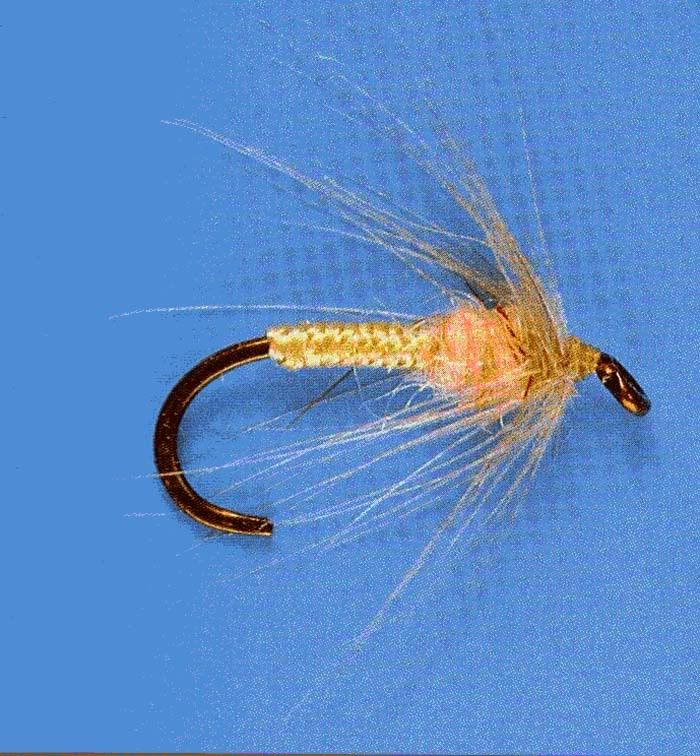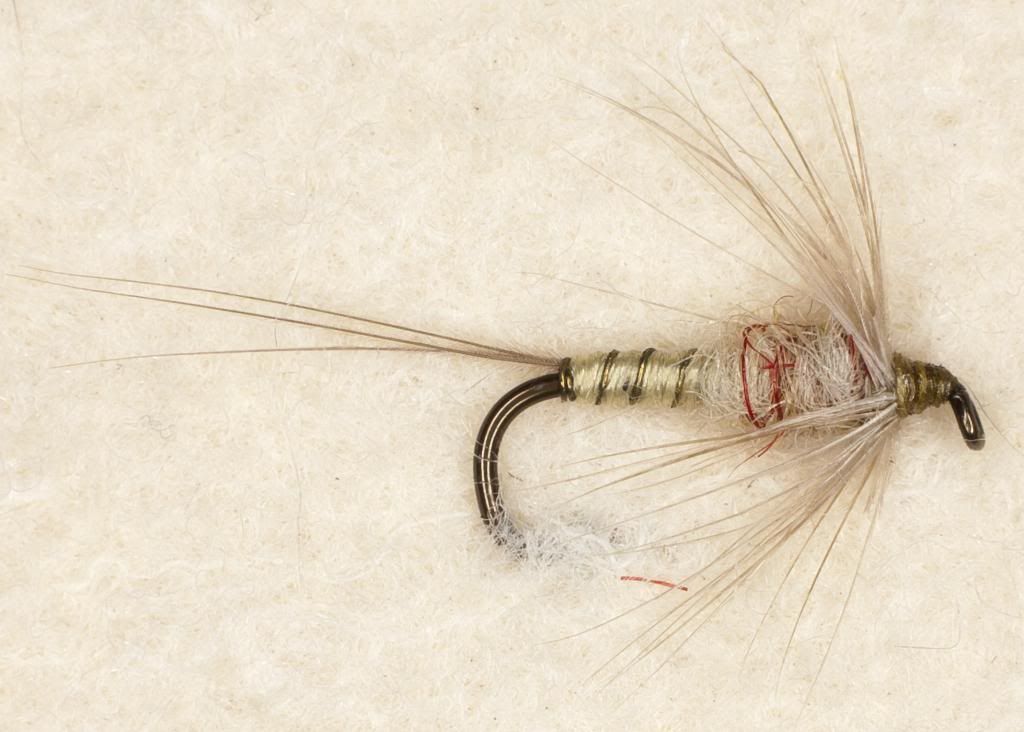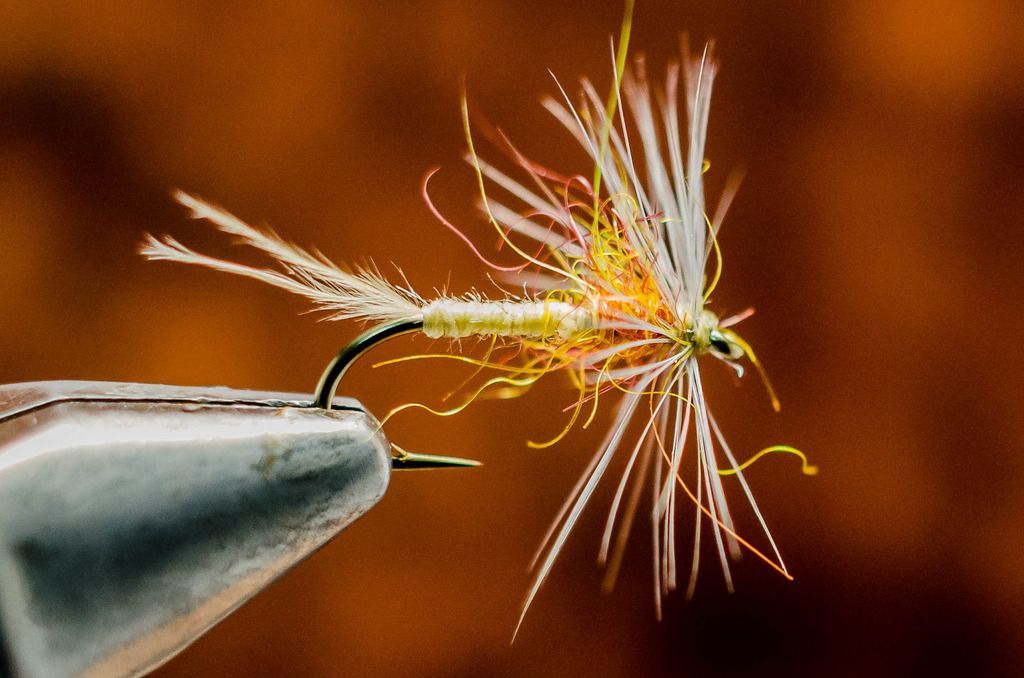Thanks for the reference to the earlier Tups thread, Ray -- I had somehow missed that! It was quite illuminating, and so many interesting flies. I also found your post on Sparse Grey Matter, which was wonderfully done.
T2F: Thanks for the info! Great stuff. I think I'll work with the Leisenring version (as it holds to the boundaries of the swap).
That leaves us with two images both attributed to the hand of Leisenring:
This one (also shown above) is attributed to Leisenring by Gordan Wickstram in Art of Angling Journal Vol. 1, Issue 3

In further searching, I found the following picture here in the flymphforum from Lance, of a Tups tied by Leisenring, now in the collection of Bud and Judy Hofer (http://www.flymphforum.com/viewtopic.php?f=16&t=3760)

Rather different flies, both attributed to Leisenring's hand! One with tails, one without. One pretty clearly floss, the other perhaps buttonhole twist. One with a rib, one without. And while it's possible to imagine that there is some color change in the scanning process, there is no denying the thoraxes are radically different colors (and neither corresponding to the written recipe). (I was also glad to see that they are both tied on down-eye hooks, as I don't own and can't access locally up-eye hooks!).
I'm no literalist-fundamentalist, so I'm intrigued rather than troubled by the differences - but it does make it challenging to try to tie an 'authentic' Leisenring Tups!


